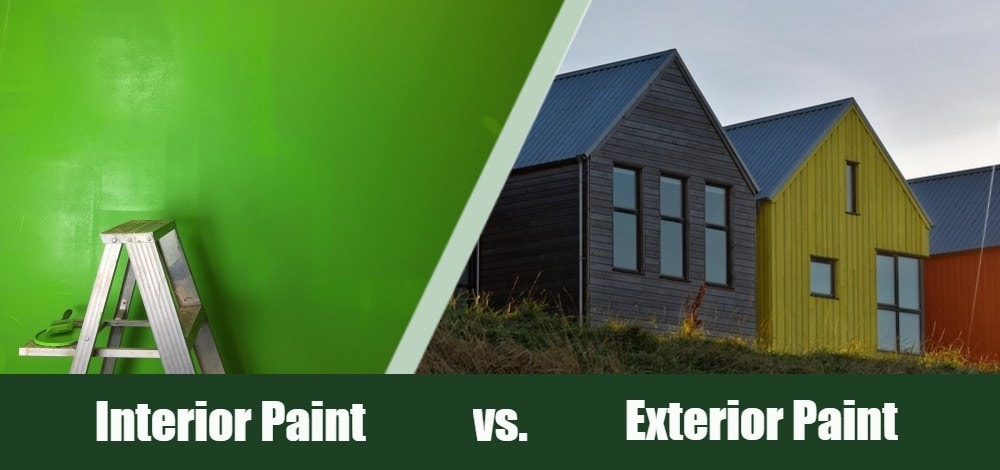Interior vs. Exterior Paint: What’s the Difference?
-
Pete Ortiz
- Last updated:

Painting is something almost everyone must do at some point in their lives, and one of the most common points of confusion is the difference between indoor and outdoor paint. Many people believe that outdoor paint is more durable paint that is also suitable for indoors, and indoor paint is less durable but is available in more colors. Is this true, and are these the only differences between indoor and outdoor paint?
We’re going to help answer that question by giving you a detailed description of each type. We’ll look at the different paint composition and qualities so you can learn the difference between indoor and outdoor paint and when to use them.
Keep reading while we go into detail about resin, durability, VOCs (Volatile Organic Compounds), and clean-up to help you make an educated decision about your next purchase.
What is Paint?
Before we can discuss the differences between indoor and outdoor paint, it would be helpful first to explain what paint is. Paint can have any number of ingredients, but three components are in every kind of paint, and they are solvents, resins, and pigment.
Solvent
The solvent is the liquid part of the paint. When using latex paint, the solvent is water. When using oil paints, the solvent is mineral spirits.
The solvent is what holds the ingredients together while you’re spreading it over your surface. The solvent evaporates to leave the dried paint behind. The oil will take a lot longer to dry than water, and it produces a pungent odor, but the paint often brushes on smoother, and the colors appear brighter.
Resins

Resins are epoxy or acrylic substances, and it’s what chips and peels off over time. Resins are what paint “is.” Different types of resins produce paints with different hardness, which allow paints to behave differently. The difference between indoor and outdoor paints will all boil down to the resins they contain.
Pigment
The pigment is responsible for the color of the paint. It only takes a few drops of dye to tint the paint to any color you like and you can often create a color at the paint store. The color does not affect the way the paint behaves.
Interior paint
Interior paint uses harder resins than exterior paint. Harder resins produce a paint that will resist scuffing and scratching. Airborne particles, like grease, can’t penetrate the harder resin and will remain on the surface. Harder resins allow for scrubbing and cleaning.
There are oil and latex indoor paints, but we usually use latex paint indoors because it produces much less odor and it is easier to clean up.
- Scrub-able
- Resists staining
- Prevents scuffing
- No outgassing
- Can only use latex paint
- Can’t handle temperature changes
Exterior paint
Exterior paint uses softer resins in its construction. These more elastic resins withstand some bending and are ideal for use in an environment that freezes and thaws and is prone to moisture. This paint is more resistant to sunlight and often has additives to combat mold and mildew.
Harder resins release gas through a process known as outgassing, and outgassing can continue for years. The gases produced are harmful to your health, and that is the primary reason we don’t use exterior paint indoors.
The softer resins are less durable than harder resins, and exterior paint will smudge when scrubbed.
You can use oil or latex exterior paint outdoors because you don’t need to be concerned with harmful gasses.
- Combat fading
- Mildew resistant
- Can use either oil or latex paint
- Survives temperature changes
- Resists moisture
- Delicate
- Scuffs and scratches
- Outgassing can last years
Conclusion
Now that you have read over the differences between interior and exterior paint, we hope that you have a better idea about what the differences are and when to use them. It’s best to do as the labels say and use indoor paint indoors and exterior paint outside. Indoor paint is too hard for the outdoors, and the harsh elements will quickly cause it to chip and crack. Trying to use exterior paint indoors is dangerous due to the outgassing, and too soft for regular cleaning and constant rubbing that occurs indoors.
If you enjoyed this article and have learned something new, please share this interior versus exterior paint discussion with your friends on social media.
Featured Image Credit: Pixabay
Contents




